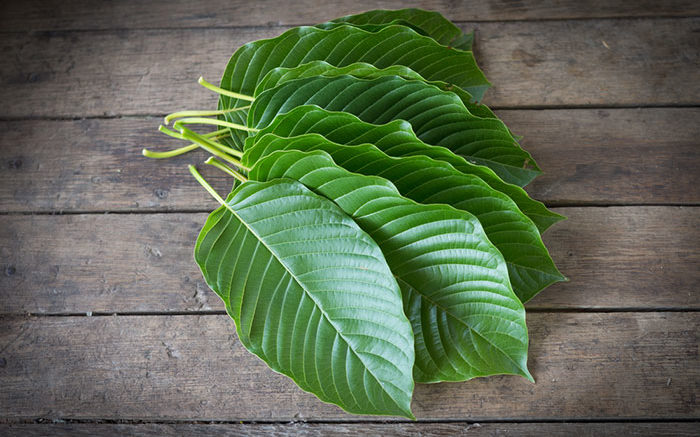Kratom has grown in popularity worldwide due to its ability to support many individuals struggling with chronic pain, anxiety, and several other stressful conditions. If you want to begin using Kratom, you must first learn everything to know about it.
Kratom is a tree belonging to the coffee group, and its leaves can give the body stimulant and sedative effects. This herb, according to studies, can manage various problems affecting the human anatomy, particularly individuals who have arthritis. There are many other treatments for arthritis, but these days people are looking for natural alternatives. There are many natural alternatives to manage arthritis; it’s essential to research and choose the best joint pain supplements that suit your needs and preferences.
Arthritis
Arthritis is an inflammatory disease that attacks the joints, resulting in long-term pain. This disease poses a danger to the human body and triggers excruciating pain, rendering victims unable to live a healthy lifestyle.
Arthritis comes in many forms, the most prevalent of which are Rheumatoid Arthritis and Osteoarthritis. Early occurrence is, nevertheless, a likelihood in some cases. Osteoarthritis is the most prevalent form of arthritis because it is a normal consequence of aging. The damaging of cartilage tissue with time causes it. External factors such as a diet lacking vital nutrients, sedentary lifestyles, injury, or malnutrition can intensify this damage. A person’s hereditary traits often influence this. The joints are slightly rigid or sore in the initial stages; however, they worsen over time, and pain becomes unavoidable.
Osteoarthritis is not fully curable, but medication may help delay its progression. Long-term use of conventional prescription pain medications has been linked to various negative consequences, spanning from dependency to other chronic conditions. Products like Earth Kratom are organic and have non-addictive analgesic properties.
Evidence to Kratom’s Effectiveness for Arthritis Pain
Social and legal biases against naturally occurring substitutes to psycho-actives have eased in the past few years. Because of Kratom’s natural analgesic properties, it’s also becoming a popular alternative treatment. Anecdotal evidence suggests that it effectively treats chronic pain conditions such as Arthritis, Fibromyalgia, and MA.
Nevertheless, scientific evidence from randomized clinical trials promoting this use is still not widely accessible. As a result, many people suffering from chronically debilitating health problems choose to pursue alternative therapy methods in the long run.
Kratom’s results, use, and popularity as a drug alternative were assessed and monitored in an online poll to understand why and how individuals use it. According to the findings, a significant number of people, roughly 48%, used Kratom for pain management. In contrast, 22% used it for relaxation and curing anxiety problems such as depression and PTSD. Another 10% used it to boost energy or mood. Around 10% of consumers opted for it to help deal with withdrawal symptoms or break free from past opioid addictions.
Kratom helps to alleviate pain, as shown by the statistics above. The rate of adverse effects was meager, at just 13%, with most of these effects being minor. According to a report, Kratom is a promising option for the treatment of arthritis.
Kratom’s Use to Manage Pain
In the United States alone, nearly 54 million people and 300,000 kids have arthritis each year. With these numbers in mind and the undiagnosed cases factored in, it’s simple to see the scope and severity of the issue on a worldwide scale. People with this condition experience constant, frequently crippling pain and find it difficult to handle daily activities. Symptoms are minimized with the use of potent medicines that can lead to additional adverse effects and, in the long run, be harmful to one’s life quality.

Since Kratom contains opioid-like pain-management properties and is also a healthier, non-addictive alternative, it’s a fantastic option for people suffering from this disease. Arthritis patients struggle both mentally and physically. The weakness and deterioration of the joints create physical discomfort that has long-term psychological consequences such as depression and anxiety.
Kratom’s alkaloid receptors attach to receptors in the brain in almost the same way as drugs do. Unlike those who use other drugs, Kratom has proved to be a partial agonist as its consumers have indicated no addiction or intoxication when taken in low doses. Users have reported significant pain relief after using the product.
By using Kratom as a treatment option for arthritis, the following results might be possible due to its analgesic characteristics:
- Minimized inflammation.
- Increased vigor and vitality
- Reduced pain and stiffness, improved flexibility.
- Reduced intake of generic medicines.
- After ingestion, there are negligible adverse effects.
Kratom’s Consumption and Dosage
In the United States, Kratom is mainly consumed in liquid form, though its consumption in powder form and capsules is increasing. Owing to similarities with opioid addiction trends witnessed in other psychotropic drugs, its use in the form of an injectable is generally discouraged.
In terms of managing pain, there are several methods of ingestion. Liquids, powders, and capsules are among the many solutions available to users. Application in the form of a tincture or cream is another common alternative for treating chronic arthritis pain.
Both leaves and powder of Kratom are good for making a soothing tea. It is a simple and convenient alternative. Users can also add the powder to milk shakes or energy drinks. Many with a gag reflex prefer this alternative because swallowing is challenging for them. Gel capsules can work well for those who dislike the taste of pills.
A rough estimate of a good dose, centered on experimentation, will be somewhere between 2 and 7 grams. To avoid unsafe or contaminated products, consumers should seek out credible, dependable vendors.
Risks of Kratom Use
As with any other drug that affects the body, Kratom is not without risk. Overdosing may have a variety of negative consequences. Weight loss, chills, nausea, vertigo, vomiting, sedation, and decreased intestinal functionality are some symptoms.
Bottom Line
It is impossible to dismiss the effectiveness of Kratom in the management of Arthritis pain if used appropriately. Reported findings support this claim. However, consumers should exercise caution when using this herb for an extended period due to some protracted adverse effects, as mentioned above.
